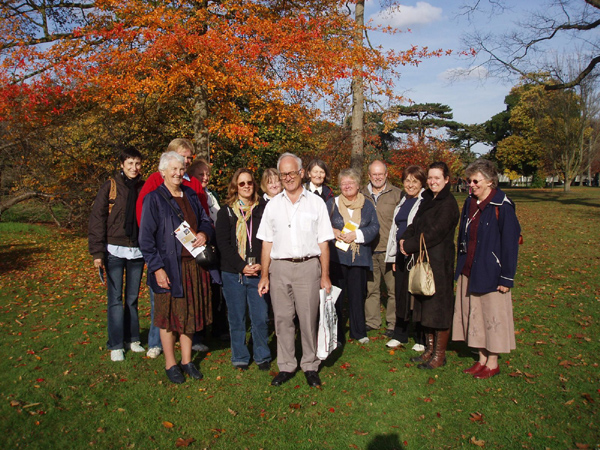
|
Adrian with the members of the KGG party,
and friends from the Natural History Museum
(NHM), at Kew
|
One particular interest of our Chairman, Dr
Adrian Rundle, is the study of the relationship
between fossils and their living counterparts.
The value of such a study was clearly
demonstrated in one of Adrian's recent
Microfossil Workshops, using samples collected
from a pond in Richmond Park. There can surely be
no better way to appreciate the beauty of a
fossil Ostracod than to watch, through a
microscope, a live specimen swimming in a Petri
dish.
Adrian lives within comfortable walking distance
of the Royal Botanic Gardens at Kew and has been
able to pass on some of his enthusiasm for the
fossil/current comparison by leading guided walks
in Kew Gardens to study some living specimens of
very early plant types.
Return to Top
On Sunday 4th November 2007 Adrian led a group of
about a dozen (KGG members and friends from NHM)
on an informal visit to the gardens. The group
met at the Victoria Gate entrance at 11.00 a.m.
The aim of the visit, apart from having an
enjoyable day out in beautiful surroundings, was
to look at trees. The group looked at modern
descendants of some of the earliest species and
how trees adapt to particular environments. As
always, Adrian was a 'walking encyclopaedia'
giving countless facts on trees, fruits, leaves
and seeds.
The tour took in the Marianne North Gallery of
botanical paintings, the Pagoda Vista, the
Evolution House, the Temperate House and the
Princess of Wales Conservatory, where a
particular interest was the giant catfish in the
pond near the carnivorous plants section. The
group also saw specimens of Ginkgo biloba. Fossil
remains of this species, dating from the
Jurassic, have been found on the Yorkshire coast.
Kew Gardens is not only one of the finest
botanical gardens in the world but, in keeping
with its designation as a 'World Heritage Site',
it also puts on regular themed displays for the
public's entertainment. This autumn the theme was
Henry Moore and a large number of his sculptures
were placed around the garden; an ideal setting
for them. As Adrian likes several of Henry
Moore's sculptures, the display was an
interesting adjunct to the botanical tour.
The autumn colours were close to their best, the
weather was perfect and the everchanging setting
at Kew always has new surprises. So, if you would
like to join the next Kew visit, watch for
details on the 'Field Programme' page of this
website.
The pictures below were taken by Diana Franks.
Return to Top
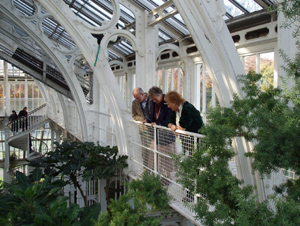
|
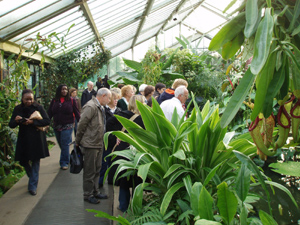
|
Adrian and Ann Harrison, with Angela
Nazzani on the gallery of the Temperate
House
|
Adrian with members of the KGG party in the
Princess of Wales Conservatory
|
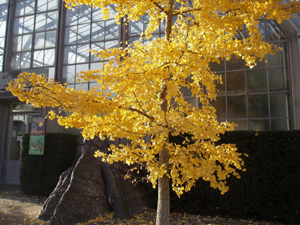
|
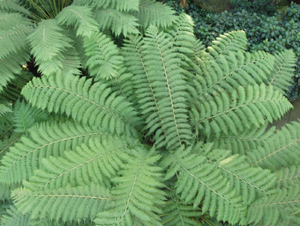
|
A Ginkgo biloba outside the Evolution
House
|
A tree fern
|
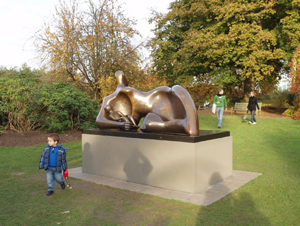
|
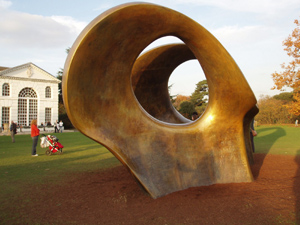
|
Henry Moore's "Draped Reclining Mother and
Baby",1983, beside the Broadwalk
|
Henry Moore's "Double Oval", 1966, in front
of The Orangery
|
Return to Top